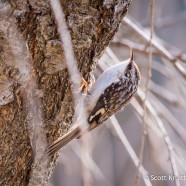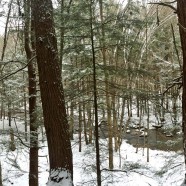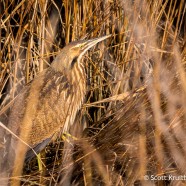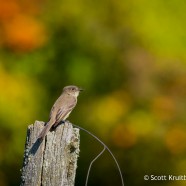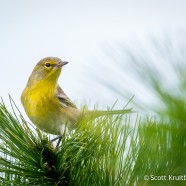Brown Creeper
Brown Creepers must be the winner in the category of “most calm, friendly and tame birds that are yet the most difficult to get a good photo of” because they stay glued to the tree bark and rarely stop moving, spiraling up and down the trunk. They examine every crevice they can for any small insects or spiders, locking those big feet on the bark and staying steady with their long tail, using that large curved bill to snag their snack. I have plenty of semi-blurry photos of the species and even more that are too dark or obstructed. Today I took out my camera to photograph a few of...
Read MoreSo Far So Good
So far we have monitored five sites of interest within Chautauqua and Cattaraugus Counties in search of new infestations of Hemlock Woolly Adelgid. For the third year in a row, all of our sites still appear to be HWA free, and are full of healthy trees that support beautiful ecosystems. This past week in particular, we monitored South Valley State Forest and learned from a local volunteer that the streams running through it are excellent trout streams. Thanks to the shade the hemlocks provide, these streams stay cool and therefore highly oxygenated for trout and other species within the...
Read MoreAmerican Bittern
This is the American Bittern (Botaurus lentiginosus), a stupendously cryptic and sensationally camouflaged heron species of freshwater and brackish marshes and wetlands. During late fall and winter they can be infrequently found moving south to warmer or coastal areas where the water does not freeze. Even their movements are meant to blend in perfectly to surrounding vegetation, stalking prey including fish, amphibians, insects, mammals, reptiles, and more. The American Bittern was once a terror in the night to many early American settlers who lived in coastal regions. Its pumping, gurgling,...
Read MoreEastern Phoebe
Here is a Throwback Thursday to a little more color! I photographed this Eastern Phoebe (Sayornis phoebe) around a month ago with the fall foliage still just beginning to change. It will be a while before we see that sort of green background again, but these birds could have stayed here for longer than usual with all the insects we still have in the air thanks to continued warmth. You never know, some may still be here…check out any hotspots, literally, and you could find some very late birds. Scott Kruitbosch Conservation & Outreach Coordinator
Read MorePine in Pine
Why do they call them Pine Warblers (Setophaga pinus) again? Oh, right. This little White Pine (Pinus strobus) tree was the perfect place for this and several other Pine Warbler migrants on a gorgeous October day.
Read More



